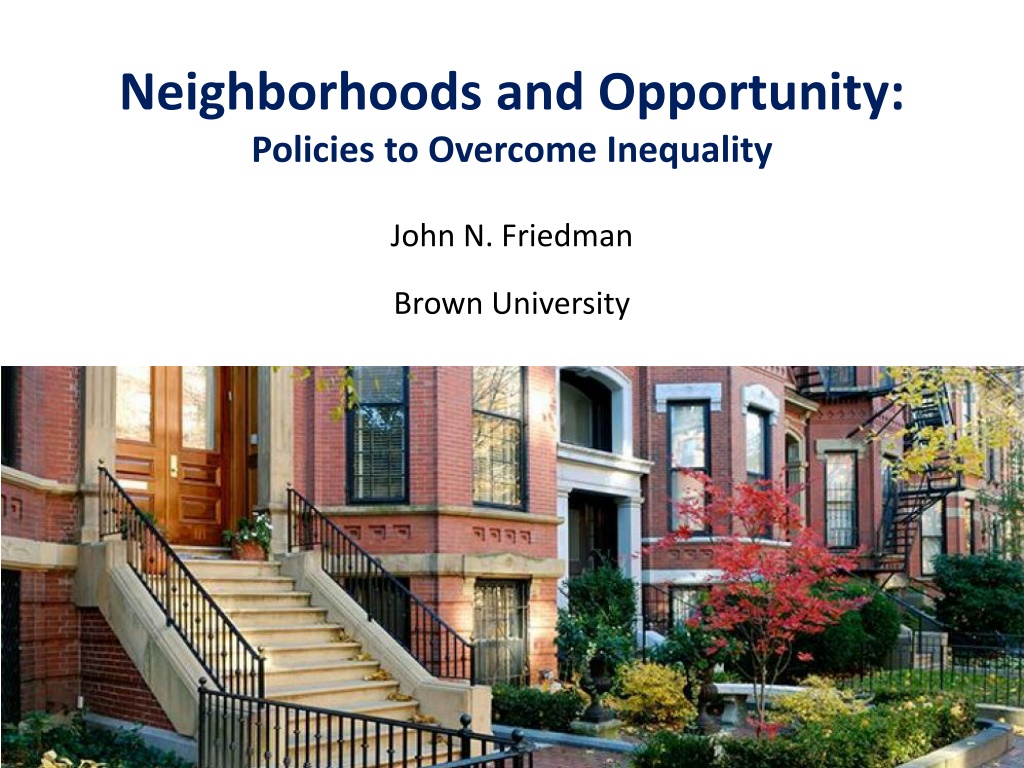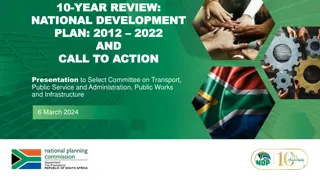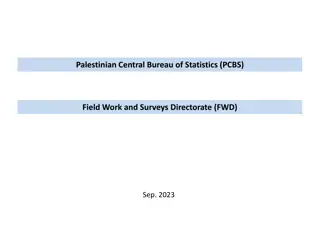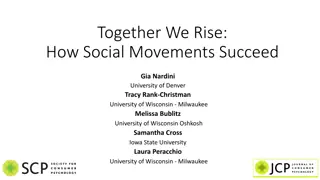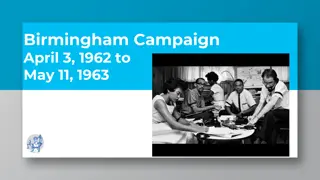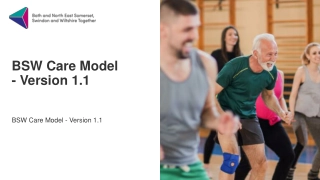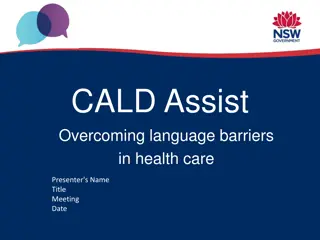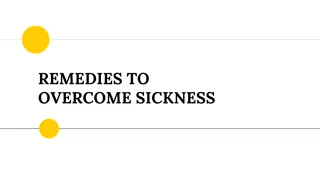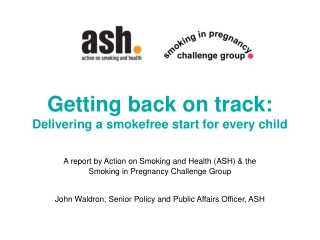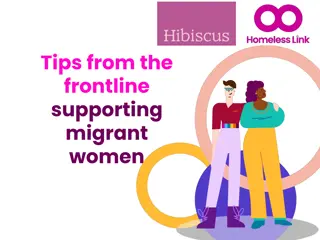Overcoming Inequality: Neighborhoods and Opportunities
Explore the impact of neighborhood policies on equality through images and statistics depicting the American Dream's achievement probability in various countries, the geography of mobility in the United States, and the effects of moving to different neighborhoods on children's future incomes based on age at relocation.
Download Presentation
Please find below an Image/Link to download the presentation.
The content on the website is provided AS IS for your information and personal use only. It may not be sold, licensed, or shared on other websites without obtaining consent from the author. Download presentation by click this link. If you encounter any issues during the download, it is possible that the publisher has removed the file from their server.
Presentation Transcript
Neighborhoods and Opportunity: Policies to Overcome Inequality John N. Friedman Brown University XX Insert photo from http://www.weisradio.com/wp-content/uploads/2013/06/education.jpg But make the image lower quality so that it takes up less memory and loads fater
The American Dream? Probability that a child born to parents in the bottom fifth of the income distribution reaches the top fifth:
The American Dream? Probability that a child born to parents in the bottom fifth of the income distribution reaches the top fifth: 7.5% USA Chetty, Hendren, Kline, Saez 2014 9.0% Blanden and Machin 2008 UK 11.7% Boserup, Kopczuk, and Kreiner 2013 Denmark Corak and Heisz 1999 13.5% Canada
The American Dream? Probability that a child born to parents in the bottom fifth of the income distribution reaches the top fifth: 7.5% USA Chetty, Hendren, Kline, Saez 2014 9.0% Blanden and Machin 2008 UK 11.7% Boserup, Kopczuk, and Kreiner 2013 Denmark Corak and Heisz 1999 13.5% Canada Chances of achieving the American Dream are almost two times higher in Canada than in the U.S.
The Geography of Upward Mobility in the United States Chances of Reaching the Top Fifth Starting from the Bottom Fifth by Metro Area Denver 8.7% Minneapolis 8.5% Milwaukee 4.5% Boston 10.4% San Jose 12.9% Washington DC 11.0% Charlotte 4.4% Atlanta 4.5% Salt Lake City 10.8% Dallas-Ft. Worth 7.1%
Effects of Moving to a Different Neighborhood on a Child s Income in Adulthood by Age at Move 100% Dallas Percentage Gain from Moving to a Better Area 80% 60% 40% 20% Atlanta 0% 10 15 Age of Child when Parents Move 20 25 30
Effects of Moving to a Different Neighborhood on a Child s Income in Adulthood by Age at Move 100% Dallas Percentage Gain from Moving to a Better Area 80% Children whose families move from Atlanta to Dallas when they are 9 years old get 54% of the gain from growing up in Dallas from birth 60% 40% 20% Atlanta 0% 10 15 Age of Child when Parents Move 20 25 30
The Geography of Upward Mobility in the United States Causal Effects on Income for Poor Children, by County
Causal Effects on Earnings for Children in Low-Income Families Top 10 and Bottom 10 Among the 100 Largest Counties in the U.S. Bottom 10 Counties Top 10 Counties Change in Earnings (%) Change in Earnings (%) County Rank County Rank +15.1 Pima, AZ -12.2 1 Dupage, IL 91 +14.4 -12.3 2 Snohomish, WA 92 Bronx, NY +14.1 -12.3 3 Bergen, NJ 93 Milwaukee, WI +13.3 -12.5 4 Bucks, PA 94 Wayne, MI +12.1 -12.9 5 Contra Costa, CA 95 Fresno, CA +12.1 -13.3 6 Fairfax, VA 96 Cook, IL +11.3 -13.5 7 King, WA 97 Orange, FL +10.8 -13.5 8 Norfolk, MA 98 Hillsborough, FL +10.5 -13.8 9 Montgomery, MD 99 Mecklenburg, NC +8.6 -17.3 10 Middlesex, NJ 100 Baltimore City, MD Estimates represent % change in adult earnings for 20 years of childhood spent in county
Causal Effects on Earnings for Children in Low-Income Families Male Children Bottom 10 Counties Top 10 Counties Change in Earnings (%) Change in Earnings (%) County Rank County Rank 1 Bucks, PA 16.8 91 Milwaukee, WI -14.8 2 Bergen, NJ 16.6 92 New Haven, CT -15.0 3 Contra Costa, CA 14.5 93 Bronx, NY -15.2 4 Snohomish, WA 13.9 94 Hillsborough, FL -16.3 5 Norfolk, MA 12.4 95 Palm Beach, FL -16.5 6 Dupage, IL 12.2 96 Fresno, CA -16.8 7 King, WA 11.1 97 Riverside, CA -17.0 8 Ventura, CA 10.9 98 Wayne, MI -17.4 9 Hudson, NJ 10.4 99 Pima, AZ -23.0 10 Fairfax, VA 9.2 100 Baltimore City, MD -27.9 Estimates represent % change in adult earnings for 20 years of childhood spent in county
The Geography of Upward Mobility in the United States For Children from Low-Income Families Dallas Metro: -2.7% (55th) Ft. Worth Metro: +3.7% (15th) Bryan County, OK Dallas County: -5.1% (66th) Tarrant County: +0.3% (38th) Johnson County: +18.0% Cooke Grayson Wise Denton Hunt Collin Hopkins Palo Pinto Parker Dallas Ft. Worth Rockwall Kaufman Hood Johnson Ellis Henderson Navarro Sommervell Note: Estimates represent change in rank from spending one more year of childhood in county. Counties colored by national deciles.
The Geography of Upward Mobility in the United States For Children from High-Income Families Bryan County, OK Dallas County: +5.7% Tarrant County: +1.6% Johnson County: +6.2% Cooke Grayson Wise Denton Hunt Collin Hopkins Palo Pinto Parker Dallas Ft. Worth Rockwall Kaufman Hood Johnson Ellis Henderson Navarro Sommervell Note: Estimates represent change in rank from spending one more year of childhood in county. Counties colored by national deciles.
What are the Characteristics of High-Mobility Areas? Five Strongest Correlates of Upward Mobility 1. Segregation Racial and income segregation associated with less mobility Long commute times (sprawl) associated with less mobility
Racial Segregation in Milwaukee Whites (blue), Blacks (green), Asians (red), Hispanics (orange) Source: Cable (2013) based on Census 2010 data
Racial Segregation in Sacramento Whites (blue), Blacks (green), Asians (red), Hispanics (orange) Source: Cable (2013) based on Census 2010 data
Five Strongest Correlates of Upward Mobility 1. Segregation 2. Income Inequality Places with smaller middle class have much less mobility Upper tail inequality (top 1%) not strongly related to mobility
Five Strongest Correlates of Upward Mobility 1. Segregation 2. Income Inequality 3. School Quality Higher expenditure, smaller classes, higher test scores correlated with more mobility
Five Strongest Correlates of Upward Mobility 1. Segregation 2. Income Inequality 3. School Quality 4. Family Structure Areas with more single parents have much lower mobility Strong correlation even for kids whose own parents are married
Five Strongest Correlates of Upward Mobility 1. Segregation 2. Income Inequality 3. School Quality 4. Family Structure 5. Social Capital It takes a village to raise a child Putnam (1995): Bowling Alone
Correlates of Upward Mobility in Dallas and Fort Worth Share in Poverty Racial Segregation Income Inequality Fraction Single Moms Social Capital Student-Teacher Ratio -100 -75 -50 Percentile in the National Distribution Tarrant -25 0 25 50 75 100 Dallas
Policies to Improve Upward Mobility What policy changes can improve mobility? Focus here on two types of policies suggested by correlations: 1. Reducing segregation: affordable housing policies 2. Improving education: teacher effectiveness
Affordable Housing and Integration of Neighborhoods One way to increase integration: give low income families subsidized housing vouchers to move to better areas HUD Moving to Opportunity Experiment: gave such vouchers using a randomized lottery 4,600 families in Boston, New York, LA, Chicago, and Baltimore in mid 1990 s Source: Chetty, Hendren, and Katz 2016
Common MTO Residential Locations in New York Experimental Wakefield Bronx Control ML King Towers Harlem
Moving to Opportunity Experiment Children who moved to low-poverty areas when young (e.g., below age 13) do much better as adults: 30% higher earnings = $100,000 gain over life in present value 27% more likely to attend college 30% less likely to become single parents But moving had little effect on the outcomes of children who were already teenagers Moving also had no effect on parents earnings Reinforces conclusion that childhood exposure is a key determinant of upward mobility
Housing Policy Implications Moving to a mixed-income neighborhood improves outcomes for low-income children Mixed-income neighborhoods produce, if anything, slightly better outcomes for the rich Integration could help the poor without hurting the rich
Housing Policy: Limitations Subsidized housing vouchers and changes in urban planning could increase upward mobility, but there are limits to scalability Moving everyone in Harlem to Bronx is unlikely to help Ultimately need policies that improve existingneighborhoods rather than simply moving people around
Using Big Data to Study Teachers Impacts School district records 2.5 million children 18 million test scores Tax records Earnings, College Attendance, Teen Birth Source: Chetty, Friedman, Hilger, Saez, Schanzenbach, Yagan 2011 Source: Chetty, Friedman, Rockoff 2014
A Kindergarten Test I ll say a word to you. Listen for the ending sound. You circle the picture that starts with the same sound cup
Correlation: Wage Earnings vs. Kindergarten Test Score $25K Mean Wage Earnings from Age 25-27 $20K $15K $10K 0 20 40 60 80 100 KG Test Score Percentile
Causal Effect of Kindergarten Class Quality: Wage Earnings $18K +$875 per year Mean Wage Earnings from Age 25-27 $1 million NPV gains per classroom $17K $16K Above-Average Class Quality Below-Average Class Quality
A Quasi-Experiment: Entry of High Quality Teacher 56 Entry of a Top 5% Teacher Average Test Score 54 52 50 93 94 95 96 97 98 School Year Scores in 4th Grade Scores in 3rd Grade
A Quasi-Experiment: Entry of Low Quality Teacher 55 Entry of Bottom 5% Teacher 54 Average Test Score 53 52 51 50 93 94 95 96 97 98 School Year Scores in 4th Grade Scores in 3rd Grade
The Value of Improving Teacher Quality 5th Median 95th Teacher Quality
The Value of Improving Teacher Quality +$50,000 lifetime earnings per child = $1.4 million per classroom of 28 students 5th Median 95th Teacher Quality
Equality of Opportunity and Economic Growth Traditional argument for greater social mobility is based on principles of justice But improving opportunities for upward mobility can also increase size of the economic pie One child s success need not come at another s expense To illustrate, focus on innovation Study the lives of 750,000 patent holders in the U.S. Source: Bell, Chetty, Jaravel, Petkova, van Reenen 2015
Patent Rates vs. Parent Income Percentile 25 Patent rate for children with parents in top 1%: 22.5 per 10,000 20 Inventors per Ten Thousand 15 10 5 Patent rate for children with parents below median: 2.2 per 10,000 0 0 20 40 60 80 100 Parent Income Percentile
Patent Rates vs. 3rd Grade Test Scores 20 85th Percentile Inventors per Ten Thousand 15 10 5 0 -2 -1 0 1 2 3rd Grade Math Test Score (Standard Deviations Relative to Mean)
Patent Rates vs. 3rd Grade Test Scores for Children with Low vs. High Income Parents 20 High-ability children much more likely to become inventors if they are from high-income families Inventors per Ten Thousand 15 10 5 0 -2 -1 0 1 2 3rd Grade Math Test Score (Standard Deviations Relative to Mean) Parent Income Below Median Parent Income Above Median
Upward Mobility and Economic Growth Gaps in test scores grow rapidly as children grow older Low income children fall further behind over time Suggests that innovation gap may again be driven by differences in childhood environments Improving equality of opportunity could ultimately benefit everyone, not just low-income families
Policy Lessons 1. Local policies can also have large impacts on social mobility. Focus on specific cities such as Baltimore and on specific neighborhoods within those cities Target subsidized housing vouchers to families with young children to help them move to better neighborhoods
Policy Lessons 1. Local policies can also have large impacts on social mobility. 2. Improve childhood environments and primary education Not just spending more money: US already spends more than other developed countries with better outcomes Instead, focus on key inputs such as attracting and retaining talented teachers (e.g., Finland) Childhood environment matters at all ages, not just the earliest years
Policy Lessons 1. Local policies can also have large impacts on social mobility. 2. Improve childhood environments and primary education 3. Harness big data to develop a scientific evidence base for economic and social policy Identify which neighborhoods are in greatest need of improvement and which policies work Precision medicine for economic and social problems
